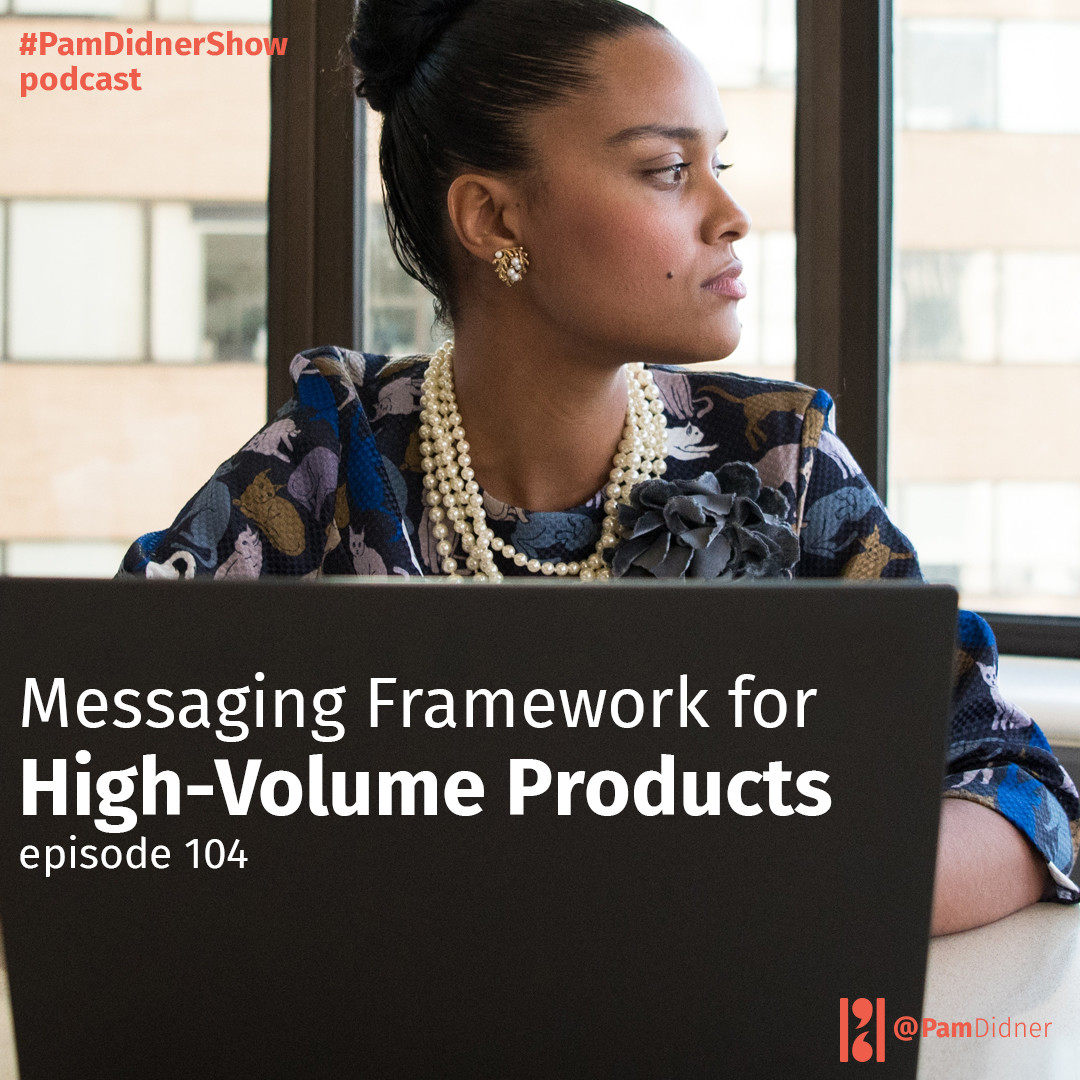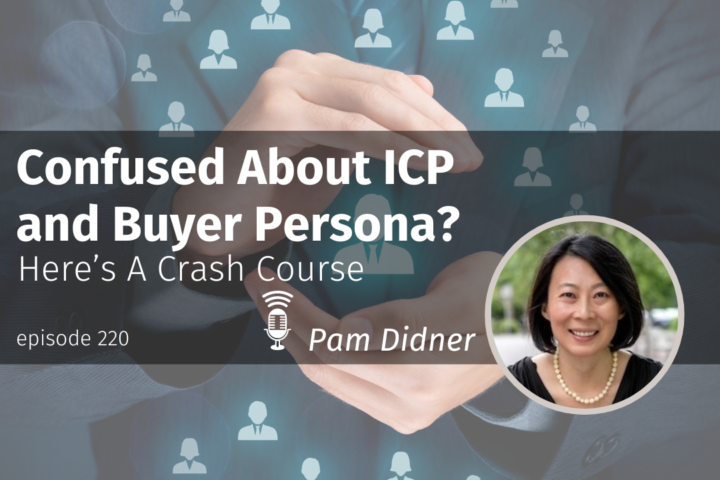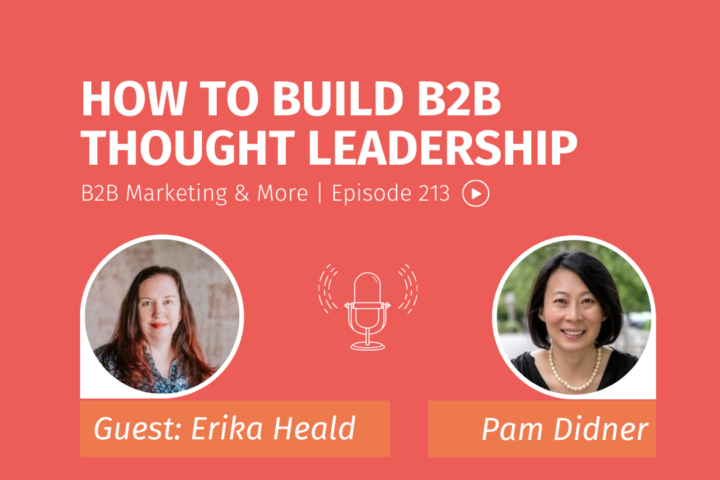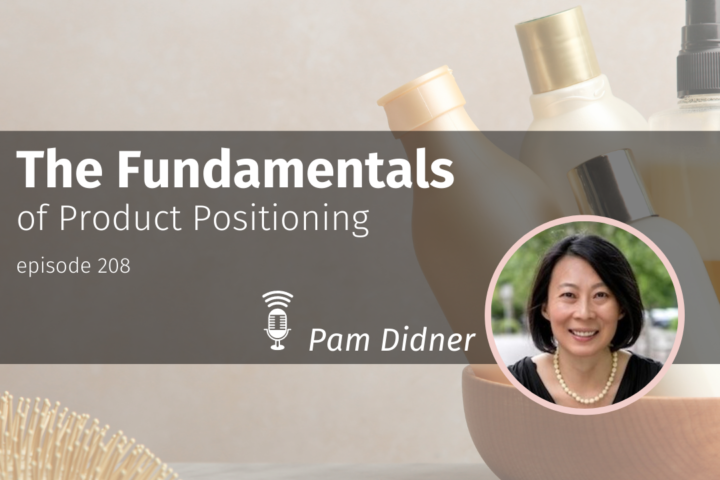
For today’s episode, I’m contining the series of how to create a solid messaging framework.
Not everyone is creating messaging or talking points. This may not be your job.
However, as a modern marketer, it’s important to have a holistic view of marketing is done.
Messaging creation, in a way, is as important as content creation or storytelling
EP101, I talked about what is a messaging framework and the process of crafting a solid messaging framework?
EP102, I shared a product-specific template
EP103, I went through a thought leadership messaging template.
For this episode, I want to talk about messaging framework for secondary or low-cost/low volume or low-cost/high volume products. As I have said, there are several listeners who asked me: “Pam, my company sells many products. Do I need to create a messaging doc for every product?”
No, you don’t. The messaging framework I shared with you on EP102 is for hero-products. The primary products that sales and marketing focus on to bring the most dollar to the company.
I understand that your company may sell many other products and you need to present these products on your websites or even on your print catalog.
If you think about it most of the eCommerce sites have a template that you need to fill out in order to showcase your products on your website. Use that template as a substitute for the messaging framework for many of your products. That’s what I’d do.
A messaging template should have the following elements:
- Name of the product
- Description of the product
- Product Features
- Product Benefits
- Images
- Product dimensions
I’d also add a column to show product owners and business groups so you know whom to track when you need to update the information.
In a way, the messaging template is product-level information for you to classify your products online and offline so that it’s easy for your customers to see and search.
Key takeaways:
- Not every product needs to use product-specific messaging templates I described on EP102. Prioritize which products need in-depth messaging templates based on your marketing budget and sales focus
- If you have many products, think about where these products cab showcased. Are they displayed online or offline in a catalog? What information is needed for online and offline formats? Maybe a form already exists
- Identify the owner of each product. If you need to update or refresh information, you know where to go to.
Additionally, this is the last episode of the messaging framework series. Like I said, not everyone does messaging framework, but it’s important to get a sense of how it’s done. If you need it one day, you can come to my website to find the templates.
So, this is B2B Marketing and More with Pam Didner. I hope you enjoyed the short episode. More B2B Marketing topics to come in the future.
Again, I’d really appreciate if you can like or subscribe to my podcast. Thank you.
Before you leave, make sure to check out the previous podcast episodes!
Have a great day!!



